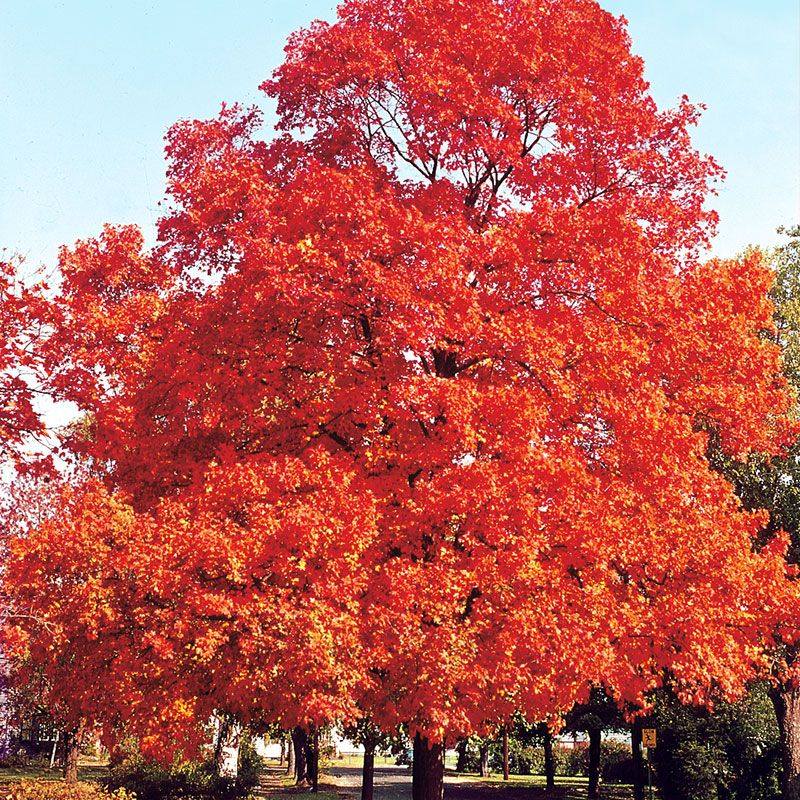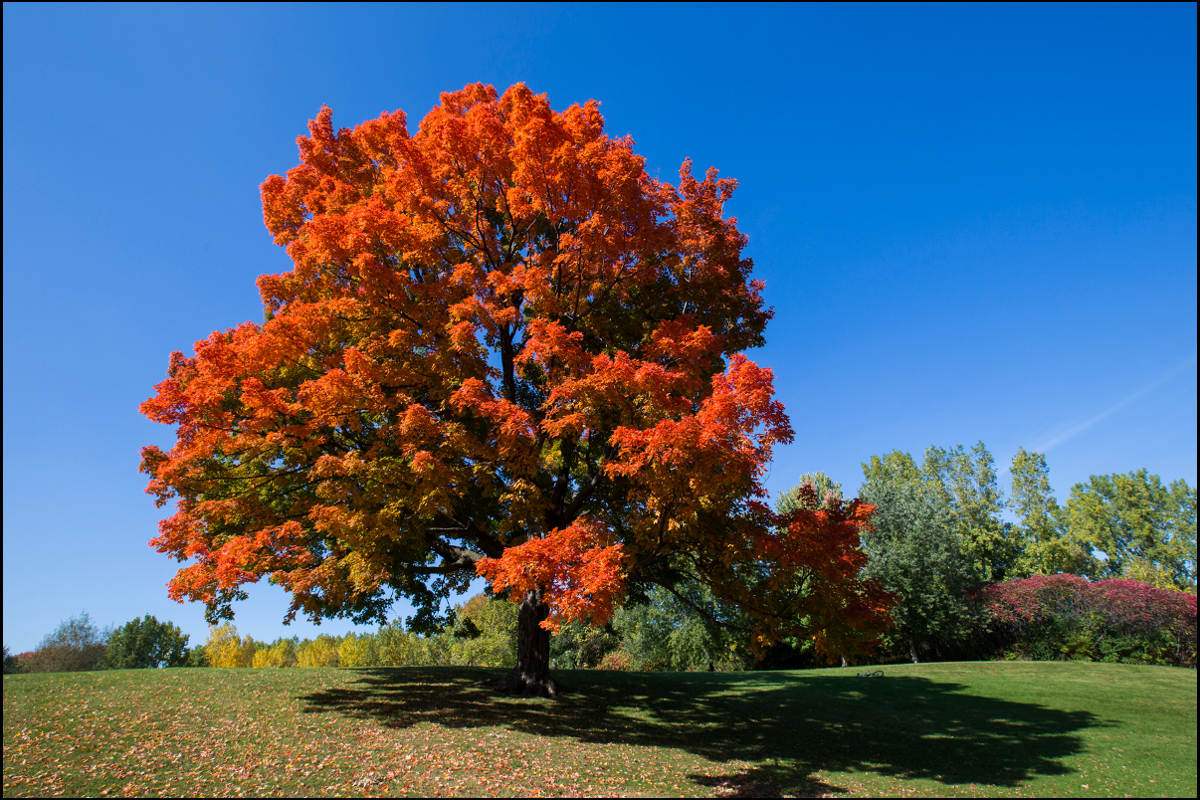

Similar to other maples, the fruit is a pair of winged seeds about 1 inch long.

The twigs are opposite on the stem, smooth and gray to brown in color. Sugar Maple Tree (Acer saccharum) - 3 Gallon Pot. The lobes are deeply cut with rounded divisions between the lobes, dark green above and pale green with a silvery cast below. The leaves are three to five lobed, but usually five lobed.

It is found throughout southeastern Canada, the eastern United States and as far west as central Iowa, but is much more common in the eastern part of the state, mostly on the moist soils of bottomlands and lower slopes with north, east or northeast exposures. Seed Stratification: Prechill for 2 months at 34☏ to 40☏ Seed Bearing Frequency: Every 3 to 7 years Site requirements vary with the species of maple. Site Requirements: Maple trees perform best in moist, well-drained soils. Height: Mature height varies with species. Tree canopies may be very dense or wide spreading. Mature Shape: Maples typically have a large, rounded crown. Slower growing maples have heavier, harder wood, making them less susceptible to branch and limb drop. Maples that are fast growing tend to have weak wood and may suffer from wind and ice damage. It is native to the US, and found throughout the eastern states. When selecting a maple tree, be sure to select a species suited for Iowa's weather. Sugar maple is a deciduous tree that can grow to a height of 50 to 130 feet. Most fall into zones 4 through 8, but some are less tolerant of cold or heat than other. Sugar Maple Tree - Photo by Paul Wray, Iowa State University Habitat: Grows on moist woods and wooded slopes in eastern Iowa. It is the best of the maples for production of maple syrup and sugar. When Spring temperatures reach 45º F during the day and nights remain below freezing (25º F is perfect), the sugarmaker drills a hole in the trunk of the tree. We have a strict rule of only one tap per tree. In the fall the yellow, red and crimson colors of the leaves form a very showy and beautiful part of the landscape. A sugar maple tree is usually 40 years old and at least 10 inches in diameter at chest height before the sugarmaker considers tapping it. The tree produces a dense, round, compact crown when grown in the open and is used quite extensively as a shade or ornamental tree. Prune your maple tree once the leaves have fully matured – there will be less sap.The sugar maple ( Acer saccharum) (hard maple, rock maple) is one of our largest and finest forest trees, growing to a height of 80 feet with a diameter of two or more feet. After the leaves drop, Sugar Maples gray bark provides a contrast to other brown-barked trees in winter. Stop fertilizing as the tree goes dormant for the winter. A Four-Seasonal Gem Like a brilliant sunset, Sugar Maple (Acer saccharum) sets the landscape on fire in autumn with its characteristic foliage colors of red, orange, and yellow. Fertilize twice a month when it's coming out of dormancy and once a month during the summer. Use a 10-10-10 slow-release fertilizer with your new maple tree. Drooping leaves can be a sign of both under-watering and over-watering. Light green leaves are a sign of over-watering. As your tree matures, it may need extra watering during the summer months. While your tree is establishing, it will require weekly watering.

Add a 2-3 inch layer of mulch to retain moisture and prevent weed growth. Fill in the remaining soil and pack firmly. A sugar maple tree is usually 40 years old and at least 10 inches in diameter at chest height before the sugarmaker considers tapping it. Water fully until the root ball and surrounding soil is saturated. Place your tree in the hole – keep the top of the root ball even with the ground. This is a large shade tree with a large root system – it's best used as a shade tree in parks and on larger properties.Ĭhoose a sunny spot for your maple tree and dig a hole that is 2 to 3 times the width of the root ball and equal in depth. It is intolerant of compacted soil, high heat, and air pollution. The Sugar Maple grows best in moist, well-drained soil but can adapt to many soil type conditions.


 0 kommentar(er)
0 kommentar(er)
